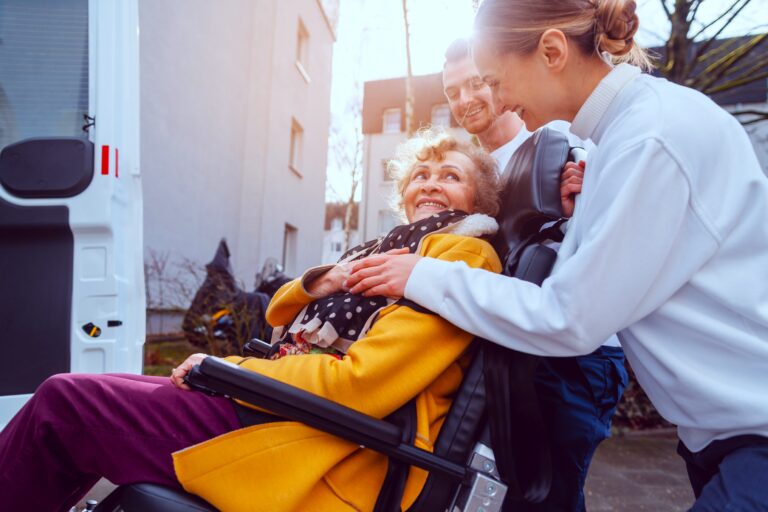When Stephen Hawking was diagnosed with amyotrophic lateral sclerosis (ALS), he was told he would only have a few years to live. He lived more than 50. ALS, as it is also known, is a rare degenerative disease that affects the muscles and gradually takes away the ability to walk, talk, swallow or breathe. Join us to learn a little more about this condition.
Key points of the article
- ALS (or ALS) is a rare and progressive degenerative neurological disease that affects the muscles and impairs functions such as walking, speaking or breathing
- Symptoms appear gradually and vary, but include muscle weakness, speech and swallowing difficulties, among others
- There is still no cure, but there are treatments that help slow down progression and improve quality of life
- Diagnosis is clinical and requires the exclusion of other diseases.
- Family support and monitoring by multidisciplinary teams are fundamental throughout the process
- Scientific research has seen promising advances, such as new genetic and immunological therapies and communication support technologies.
What is ALS?
It is a degenerative neurological disease that affects motor neurons, which are the nerve cells responsible for sending messages from the brain and spinal cord to the muscles. When these neurons stop working, the muscles lose their ability to contract properly and begin to weaken.
Over time, functions as simple as walking, talking, swallowing or breathing become increasingly difficult. This is why ALS is considered a progressive degenerative disease; it worsens over time and increasingly affects a person’s autonomy.
Difference between ALS and ALS
ALS and ALS are, in practice, the same thing. The acronym ALS (Amyotrophic Lateral Sclerosis) is more commonly used internationally. In Portugal, the most common term is ALS – Amyotrophic Lateral Sclerosis. Both refer to the same neurological condition.
Causes of ALS
The truth is that we still don’t know for sure what causes ALS. In most cases, the disease appears without warning and without a family history. Only around 5 to 10% of cases have a genetic origin.
Possible links with environmental factors such as exposure to toxins, smoking or even military service are being studied, but so far there is no clear explanation or identifiable cause in most cases.
We know that it is more common in men, generally from the age of 60, and that its progression varies greatly from person to person. It is also estimated that there is a prevalence of three to five cases per 100,000 people.
What are the first symptoms of ALS?
The symptoms of ALS can begin subtly, but gain strength over time. The first signs usually appear in the hands, legs or speech. Although most people keep their mental abilities intact, some patients also develop associated forms of dementia.
Some of the most common symptoms:
- Muscle weakness in the legs or arms
- Difficulty walking, holding objects or writing
- Muscle atrophy (muscles decreasing in volume)
- Frequent spasms and cramps
- Slurred speech or difficulty articulating words
- Difficulty swallowing
- Increased saliva
- Extreme tiredness
- Emotional or cognitive changes (in some cases).
How can ALS be diagnosed?
The diagnosis of ALS is clinical, which means that it depends on the assessment of symptoms and the exclusion of other diseases. There is no single test that confirms ALS immediately.
Usually, the neurologist performs:
- Detailed neurological examination
- Electromyography (to analyze the electrical activity of the muscles)
- Magnetic resonance imaging
- Blood and urine tests
- Muscle or nerve biopsies, in some cases.
Unfortunately, the whole process can take time, which delays the start of support treatments.

Is ALS curable? What is the treatment?
So far, ALS has no cure, but there is medication that can help slow down the progression of the disease and preserve some functions for longer. The results vary from person to person, but the goal is always to provide comfort, relieve symptoms and maintain autonomy as much as possible.
Treatment requires an integrated and multidisciplinary approach, which may involve:
- Physiotherapy and occupational therapy
- Speech therapy
- Nutritional support (and in many cases tube feeding)
- Non-invasive ventilation, when breathing is compromised
- Equipment to support mobility and communication.
Throughout the process, it is essential to have a specialized team: doctors, physiotherapists, speech therapists, nutritionists, psychologists, caregivers and other professionals who help adjust the care plan to each person’s needs.
Although there is still no cure, scientific research has made great strides. In 2023, the first treatment targeting a genetic mutation associated with ALS – the SOD1 gene – a hereditary form of the disease, was approved in the USA, representing a milestone in personalized medicine(Mass General Brigham).
Innovative approaches are also being studied, such as immunotherapy with monoclonal antibodies, which could help slow down the progression of the disease(OHSU).
Another notable advance was in the field of assistive technology: an experimental brain implant allowed an ALS patient to regain the ability to communicate via a brain-computer interface, reaching a speed of up to 32 words per minute(Reuters).
What is the life expectancy of people with ALS?
The average life expectancy after diagnosis varies between two and five years, although there are exceptions. Physicist Stephen Hawking, for example, lived with the disease for decades.
It all depends on the speed of progression and the areas of the body initially affected. The bulbar form, which immediately affects speech and swallowing, tends to progress more quickly.
Respiratory failure is the main cause of death in the most advanced cases. That’s why investing in supportive treatment early on can make a big difference to the quality and length of life of people with ALS.
Living with ALS: the role of family and caregivers
Receiving a diagnosis of ALS is a difficult time, both for the patient and for those around them. It is a disease with a profound impact, which requires constant adaptation and ongoing support.
Family caregivers become key players in the patient’s life. They are often the ones who ensure daily care, help with basic tasks and provide emotional support. It is essential that caregivers also have support. Help groups, psychological support and scheduled rest are all ways of taking care of the caregiver.
June 21 marks World Amyotrophic Lateral Sclerosis Day, a date that aims to give a voice to people living with this disease and reinforce the importance of research, support for families and raising awareness of a reality that is still little known by many.
At APELA (Portuguese Amyotrophic Lateral Sclerosis Association), every day is lived with the mission of giving a voice, support and hope to those facing amyotrophic lateral sclerosis. Because no one should have to go through this disease alone.




